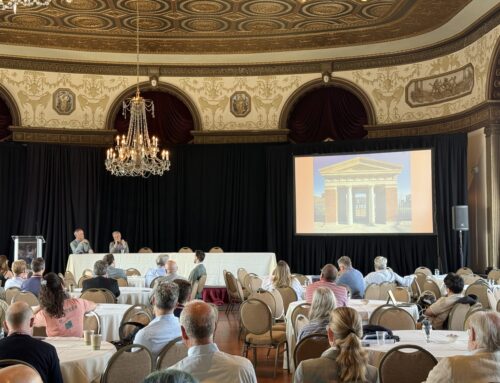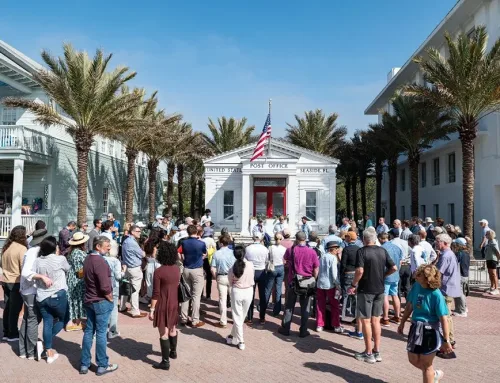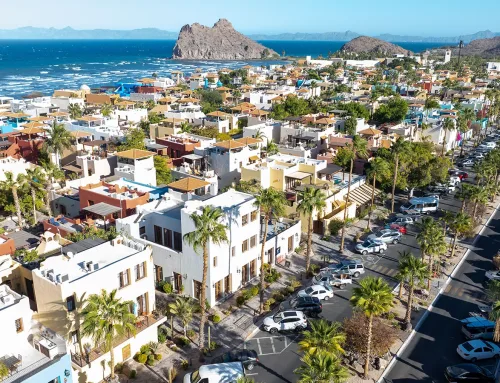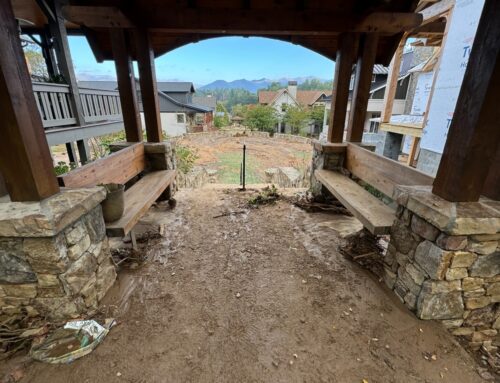This past June, the Congress for the New Urbanism’s annual conference marked a rewarding homecoming of sorts for DPZ. The City of Providence, RI, hosted the event for a second time. Back in 2006 at CNU14, the promise of DPZ’s Downcity Providence 1991 and 2003 master plans were starting to yield tangible results. By 2025 those ideas had matured and expanded with the tireless efforts of Buff Chace and his Cornish Associates team, and the enlightened contributions of local leaders, entrepreneurs, and civic organizations.
The CNU33 attendees encountered the fruits of their collective labor: a lively downtown that had flourished into a hub of locally owned restaurants, theaters, shops, public art, and new green spaces. These amenities are now home to a diverse population of college students, young professionals, families, and relocated retirees. Westminster Street and other downtown corridors, once abandoned and characterized by vacant storefronts, have undergone a remarkable transformation. Most notably, an impressive collection of 20th-century architectural landmarks has been restored to their former glory, complemented by the invigorating arrival of busy establishments lining the sidewalks and newly converted housing units above.
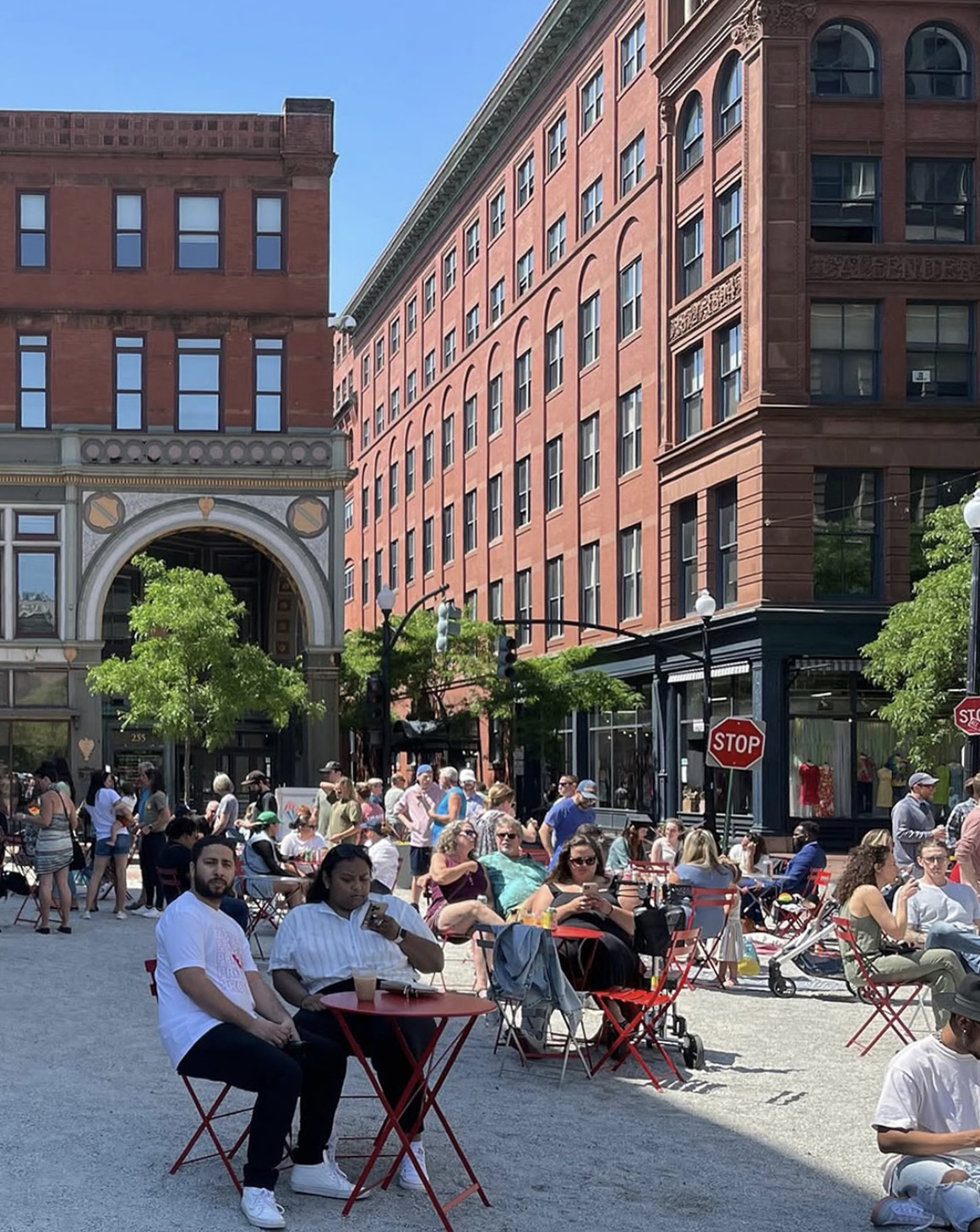
Grant’s Block Plaza is a pocket park and popular lunch spot at the corner of Westminster and Union Streets. (Photo: @indowncitypvd)
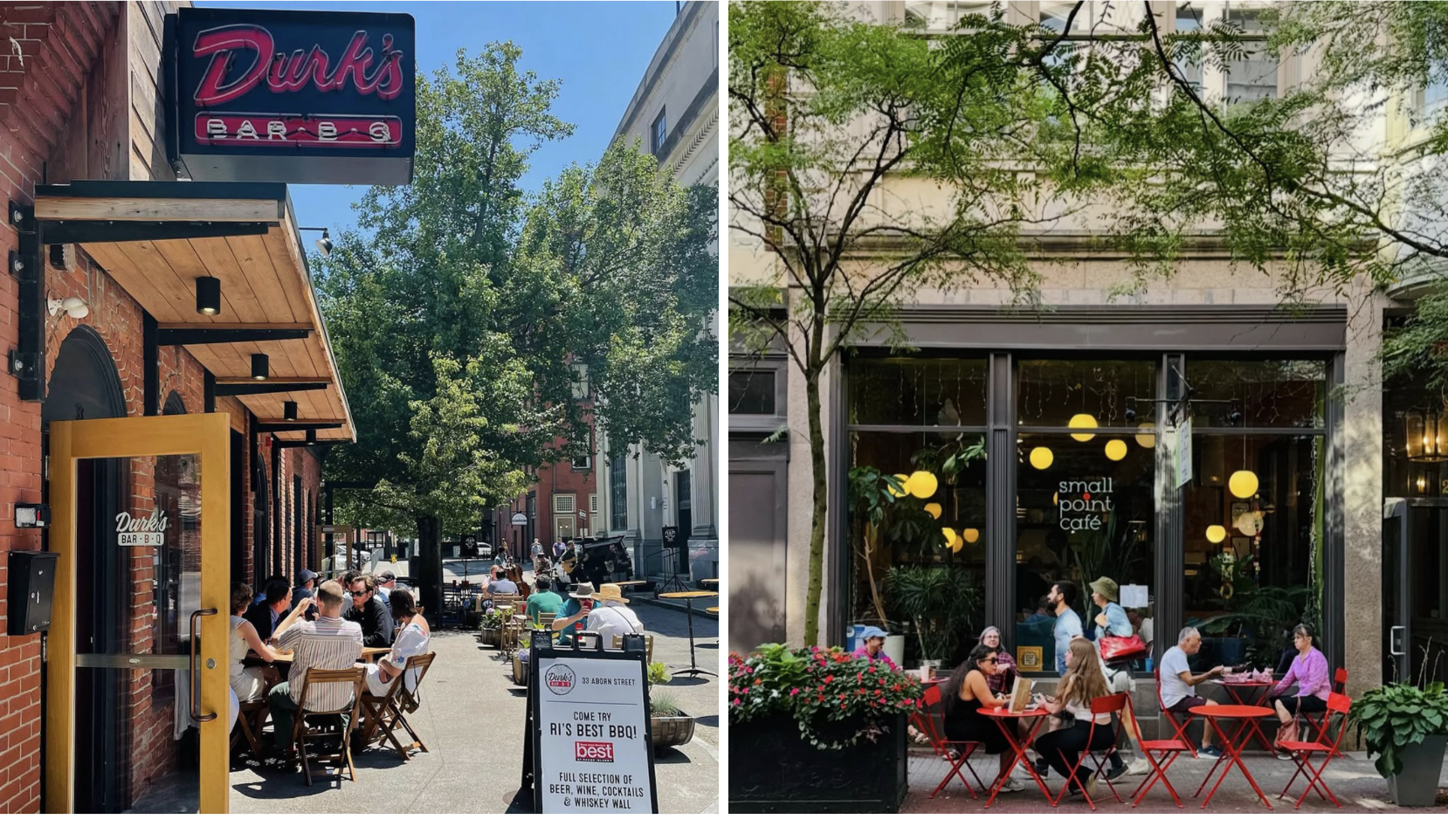
Outdoor dining has become a fixture throughout the Downcity. (Photo: @indowncitypvd)
The theme of the congress was a regional one, and thus New England was showcased with a number of sessions and special topic tours. Mashpee Commons on Cape Cod, often-cited as the first example of sprawl repair, was one of those visited by attendees. A group of DPZers took part in a special Mashpee tour and was able to see the evolution of another pair of DPZ master plans from 1986 and 2002. Now a full-fledged village center, the commons continues to work its way around suburban-minded zoning challenges to deliver the long-ago promised multi-family housing units that are starting to ensure a more walkable, balanced 24/7 node for the largely rural Upper Cape.
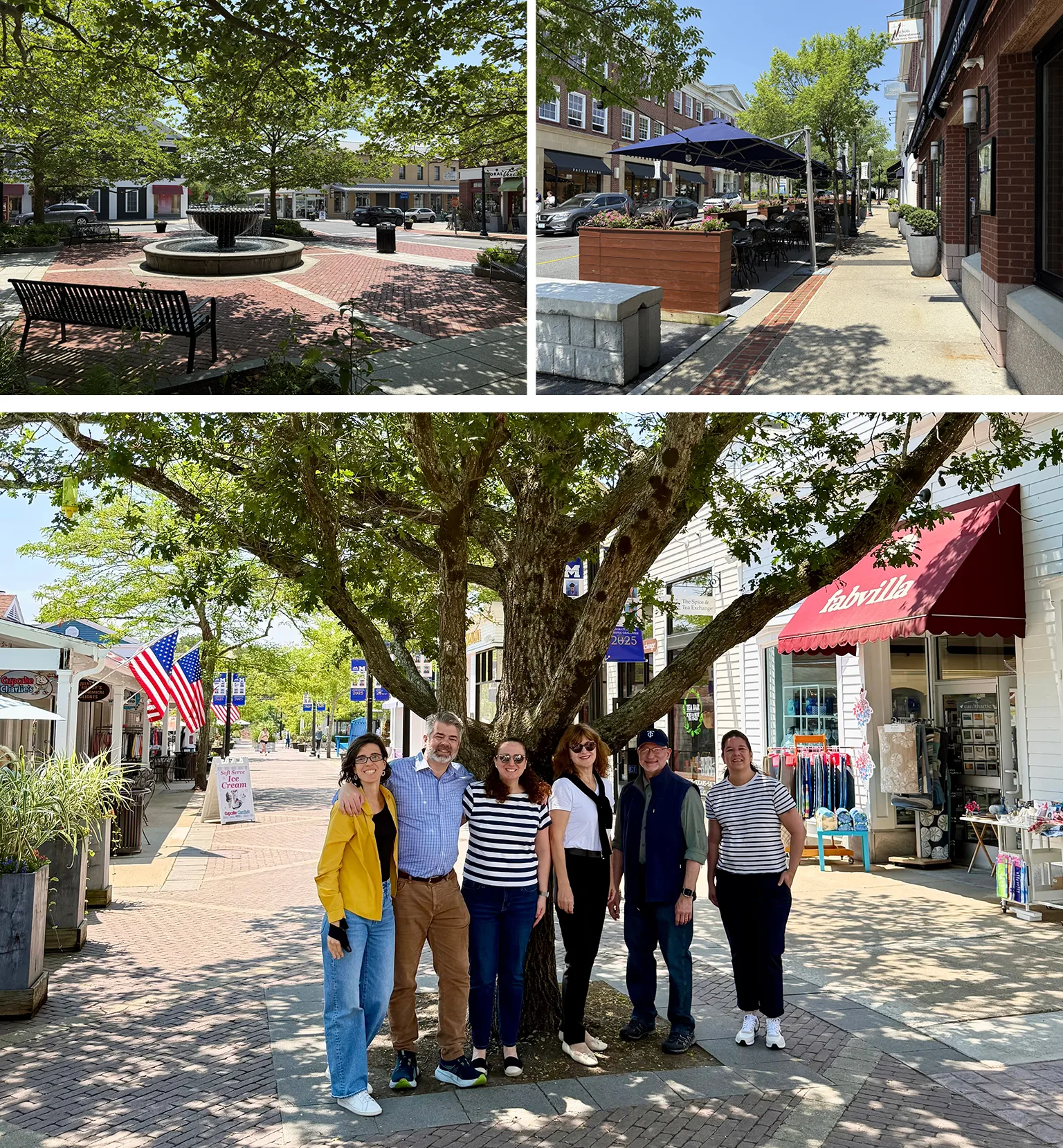
A group of DPZers took in the evolving streetscapes of Mashpee Commons.
This year’s conference saw a number of DPZers in action at a variety of sessions. Among them was outgoing CNU Board Chair Matt Lambert who handed the baton to next year’s Board Chair, frequent DPZ collaborator Jennifer Hurley. The sessions covered a wide range of topics organized around the principal tracks of climate, development, housing, urban design, and policy, as well as the Art Room.
The Influence of New Urbanism in the City of Providence opening session saw Andrés Duany share his thoughts on Downcity’s impact on the larger New England region.
Downcity Providence Project Showcase featured Buff Chace and Andrés Duany discussing the process and key challenges encountered during the nearly 40-year revitalization.
Building Regional Resilience Through Local Economies featured Andrés in a discussion of lessons from Latin America. The co-presenters were Fernando Pages and Korkut Onaran.
In Conversation: Reconsidering Recovery Response, in which Mallory Baches moderated six members with experience in recovery work, including Lizz Plater-Zyberk who traced DPZ’s experience from the firm’s response to Hurricane Andrew in 1992 to more recent recovery plans for Katrina (2005) and the Haiti Earthquake (2010).
The Perfect Little Town was led by longtime DPZ-collaborator Dhiru Thadani who was joined by Andrés on the lessons to be gleaned from the timeless urbanism and beauty of Uzès, France.
Model Climate Adaptation Enabling Legislation gave Camille Cortes a chance to share her research on Climate-responsive policy, covering climate resilience and economic diversification in Appalachian communities, and drawing from her nonprofit PLACE Initiative’s work with post-coal regions. Co-presenting were Hazel Borys, Korkut Onaran, and Scott Bernstein.
Adaptation in Action: Four Regions Respond to Climate Impact was moderated by Lizz Plater-Zyberk, who was joined by Galina Tachieva and DPZ client Sikes Ragan of the Village of Cheshire, Black Mountain, NC, along with Marc Wouters (New York) and Martin Dreiling (California). The conversations surrounded four presentations that illustrate adaptation responses to a variety of climate change impacts including coastal flooding, inland flooding, heavy rainfall, and fire in the wildland urban interface (WUI).
Neighborhood Design in the Art Room included Xavier Iglesias who showcased the art of DPZ illustrations as a tool in neighborhood planning. Moderated by James Dougherty of Dover Kohl & Partners, the session also included presentations by Eduardo Castillo and Kenneth Garcia– followed by an audience participation exercise.
Block Design in the Art Room included Xavier Iglesias who was joined by Chris Ritter to further showcase the art and techniques of DPZ block assemblages. Moderated by James Dougherty of Dover Kohl & Partners, the session also included a presentation by Thomas Dougherty– followed by an audience participation exercise.
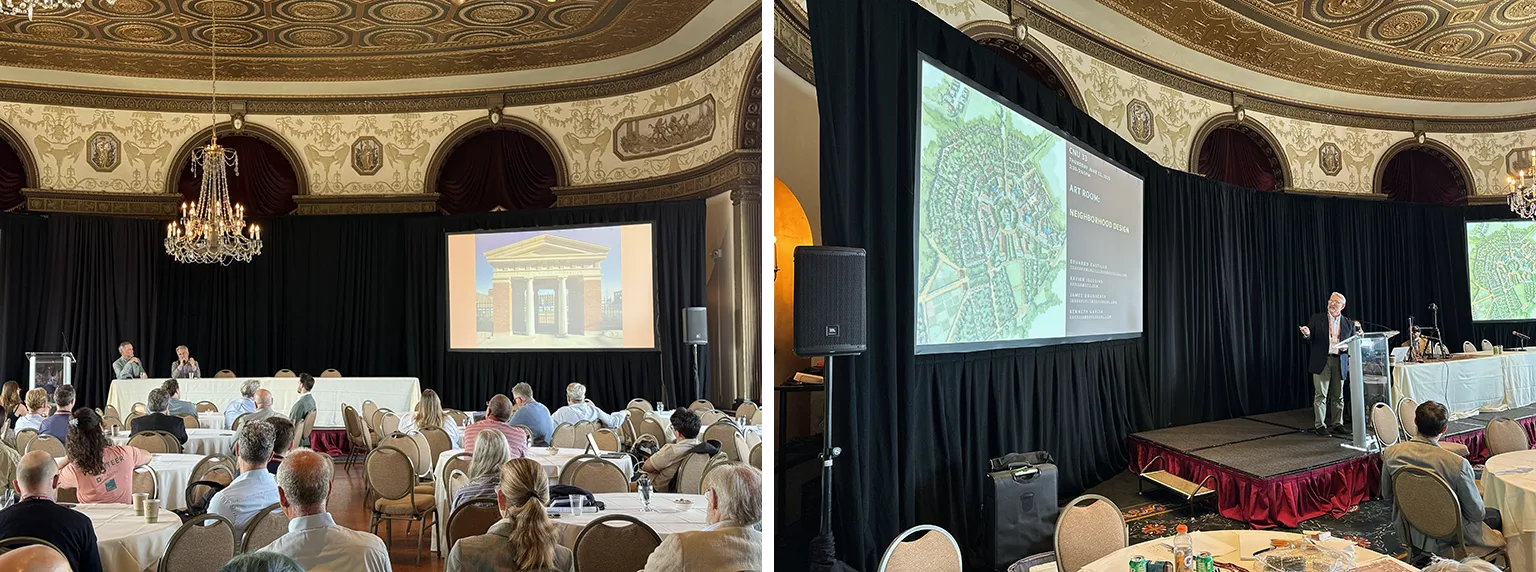
Andrés and Buff Chace recounted the story of Downcity Providence (left); Xavier Iglesias presented the techniques of Neighborhood Design via the art of DPZ illustrations (right)
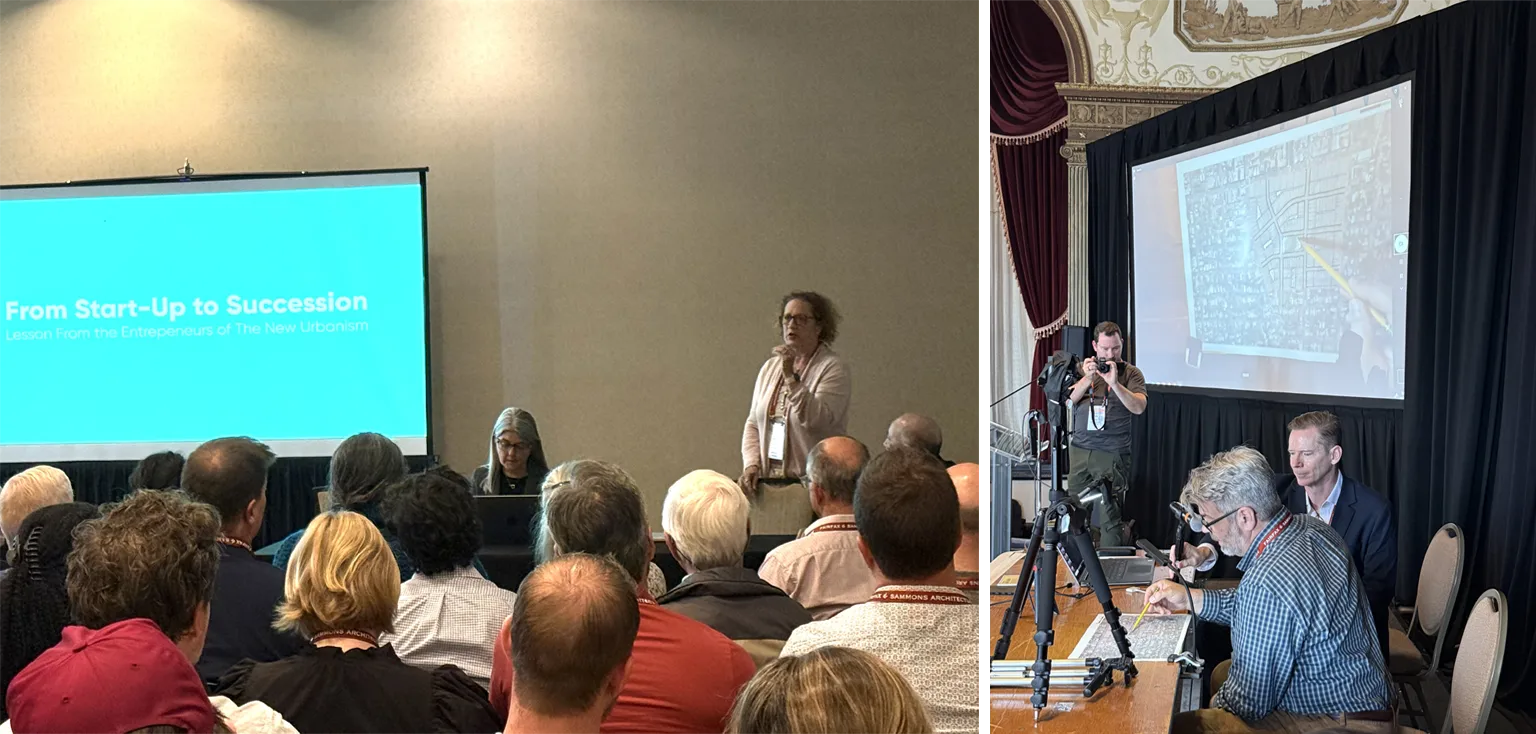
Marina Khoury shared a number of lessons learned in operating a new urbanist practice (left). Ben Northrup highlighted neighborhood design concepts during the audience participation Art Room session (right).
A New Urbanist and Necessary Perspective on Density had the participation of Marina Khoury addressing common misconceptions and misperceptions about density, where she emphasized design over numbers: people live in places. Other session presenters were David Dixon and Todd Zimmerman.
Urban Design Illustration: Principles and Work Flow in the Art Room featured Chris Ritter demonstrating his design methodology.
From Start-up to Succession: Lessons from the Entrepreneurs of the New Urbanism included Marina Khoury in a dynamic panel discussion where design company owners shared lessons on leadership, growth, and evolving firm succession. Moderated by Mike Lydon, the panel also included Joe Minicozzi and Lisa Wise.
Shaping the Future: Miami 21 and the Evolution of Form-Based Codes featured Lizz Plater-Zyberk. She was joined by Sevanne Steiner (moderator, City of Miami planner), David Snow, Melissa Tapanes Llahues and Juan Mullerat.
Hack the Code: Finding the Common Ground in Zoning Reform Strategies was a series of group discussions aimed at increasing zoning reform. Matt Lambert led the closing discussion and group report-outs. His co-facilitators in these sessions included Susan Henderson, Hazel Borys, and Jenn Hurley.
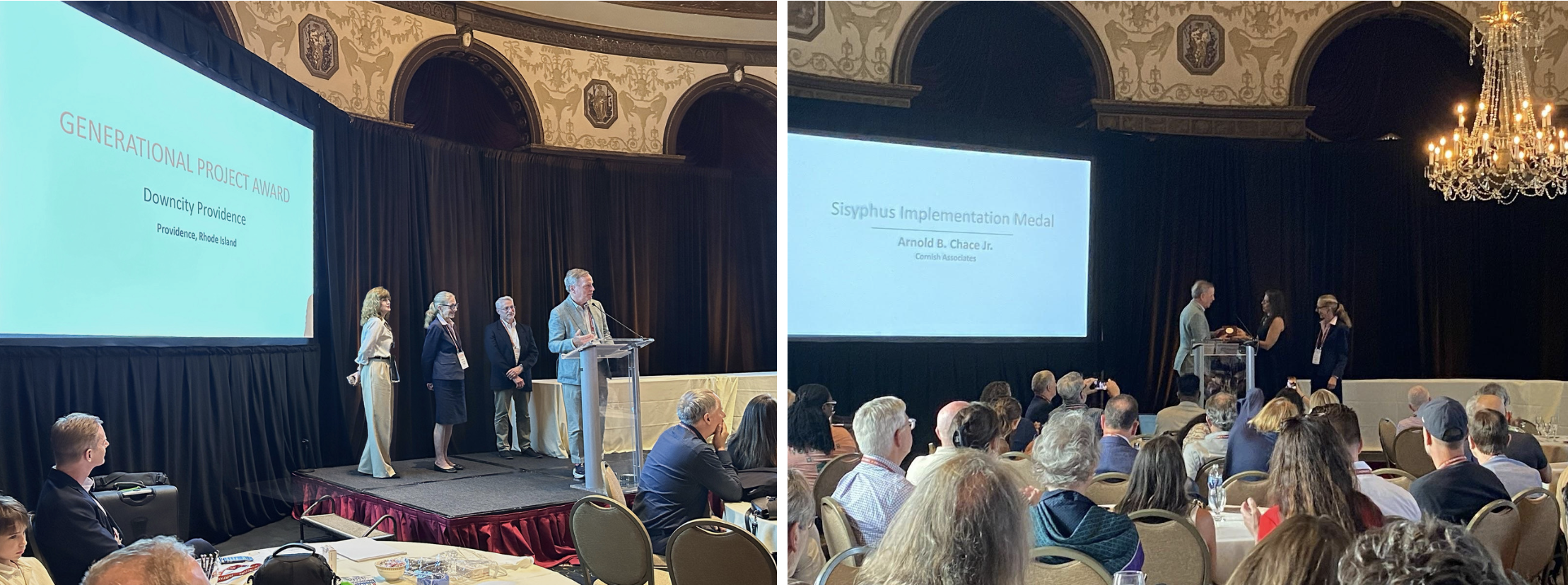
With DPZers by his side, Buff Chace accepted both the Downcity Providence Generational Project Award (left) and the Sisyphus Implementation Medal (right).
A highlight of CNU33 for DPZ was the Charter Awards presentation ceremony. Downcity Providence was honored with the inaugural Generational Project Award, recognizing the multi-decade effort usually required to revitalize older downtown neighborhoods.
Even more gratifying was to see Buff Chace, the indefatigable force behind Cornish Associates, presented with the inaugural Sisyphus Implementation Medal. The honor recognizes the importance of the private sector developer and his role in leveraging investment by individual entities with the public sector’s often-limited financial resources but all-important political support. Implied is the persistence by that private developer in cultivating the long-term returns that come from the many short-term commitments. Congratulations to Buff and his Cornish team!
To read more about Downcity Providence, you can see CNU’s Public Square article and the On the Park Bench interview with Buff Chace and Andrés Duany.

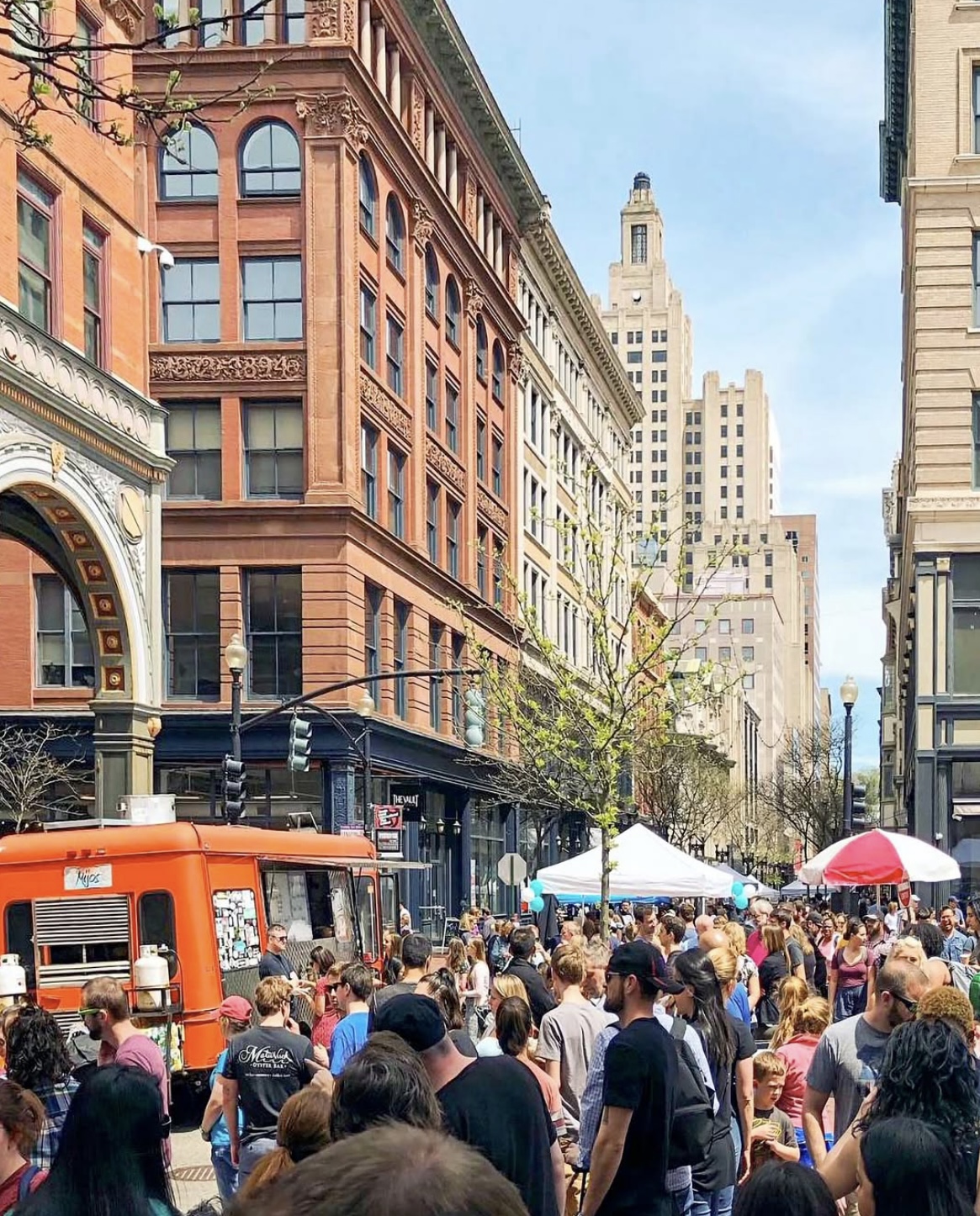 Busy street life in a reanimated downtown with the iconic Art Deco "Superman" building in the background. (photo: @indowncitypvd)
Busy street life in a reanimated downtown with the iconic Art Deco "Superman" building in the background. (photo: @indowncitypvd)